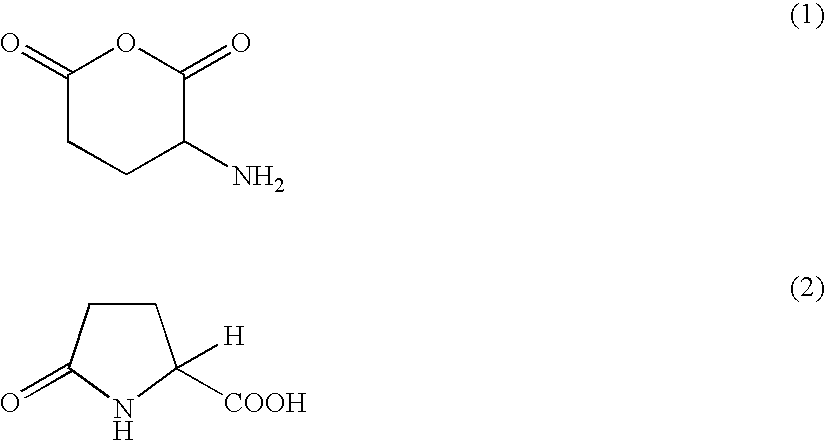Method for angiogenesis inhibition or immunostimulation
an angiogenesis and immunostimulation technology, applied in the field of angiogenesis inhibition, neoplasm depression or immunostimulation, can solve the problems of limited angiogenesis occasion in the body and insufficiently satisfied
- Summary
- Abstract
- Description
- Claims
- Application Information
AI Technical Summary
Benefits of technology
Problems solved by technology
Method used
Image
Examples
example 1
[0039]Dry fruit body of an agaricus mushroom (Agaricus blazei Murill) was crushed. It was then added with chloroform / methanol=1 / 1 mixed solution after which the mixture was warmed to 40 degrees Celsius, and extract-processed for one hour to give a chloroform / methanol=1 / 1 extract. Methanol was added to the extract, and methanol soluble layer was separated and collected. Furthermore, hexane was added in the methanol soluble layer, and hexane insoluble layer (sample 1) was collected. The hexane insoluble layer was then run through a silica gel column chromatography (silanised Silicagel 60 PF 256: Merck 7751, water / methanol=7 / 3), and ninhydrin reaction positive fractions (fraction No. 5 and 6) were collected. The fractions (fraction No. 5 and 6) were then run through HPLC (ShimpakPREP-ODS (M), column: 20φ×250 mm, Shimadzu, RT, 6 ml / min, water / methanol=5 / 1), and ninhydrin reaction positive fractions (Rt=6 to 12 min) were collected. The fractions (Rt=6 to 12 min) were further run through ...
example 2
[0040]By means of culture apparatus “JARFERMENTER” of 10 liters capacity, while aerating (2 vvm), inoculum culture broth of Phellinus linteus (1 liter) was incubated in culture medium including glucose (5% by weight), yeast extract (0.5% by weight) and peptone (2.0% by weight) at 28 degrees Celsius for 72 hours, and culture mycelium (165 g) was collected. The mycelium was dried and crushed to give mycelium powder. A hexane / ethanol / water=2 / 3 / 1 mixed solvent was then added to the mycelium powder after which the mixture was extract-processed at room temperature for three hours to give an extract (sample 2). The extract was further fractionation-processed by ethanol, and an ethanol soluble layer was separated and collected. The ethanol soluble layer was then fractionation-processed by hexane, and hexane insoluble layer was collected. The hexane insoluble layer was fractionated and purified by silica gel column chromatography, HPLC, and TLC as same as example 1. Existence of anhydrous L-...
example 3
[0041]In accordance with a method as described in the above documents, an anhydrous L-glutamate was synthesized. More specifically, trifluoroacetic acid 75 ml and L-glutamic acid mol were added to four-mouth flask, and the mixture was stirred to dissolve. While stirring the solution, thionyl chloride 0.28 mol was dripped slowly into the flask. 30 minutes later of end of dripping, diethyl ether 35 ml were added slowly into the flask to produce sediment. After holding to 5 degrees Celsius for one hour, diethyl ether 100 ml were added to repeat recrystallization. An anhydrous L-glutamate acid hydrochloride (sample 3) was then prepared.
PUM
| Property | Measurement | Unit |
|---|---|---|
| Time | aaaaa | aaaaa |
| Time | aaaaa | aaaaa |
| Time | aaaaa | aaaaa |
Abstract
Description
Claims
Application Information
 Login to View More
Login to View More - R&D
- Intellectual Property
- Life Sciences
- Materials
- Tech Scout
- Unparalleled Data Quality
- Higher Quality Content
- 60% Fewer Hallucinations
Browse by: Latest US Patents, China's latest patents, Technical Efficacy Thesaurus, Application Domain, Technology Topic, Popular Technical Reports.
© 2025 PatSnap. All rights reserved.Legal|Privacy policy|Modern Slavery Act Transparency Statement|Sitemap|About US| Contact US: help@patsnap.com


